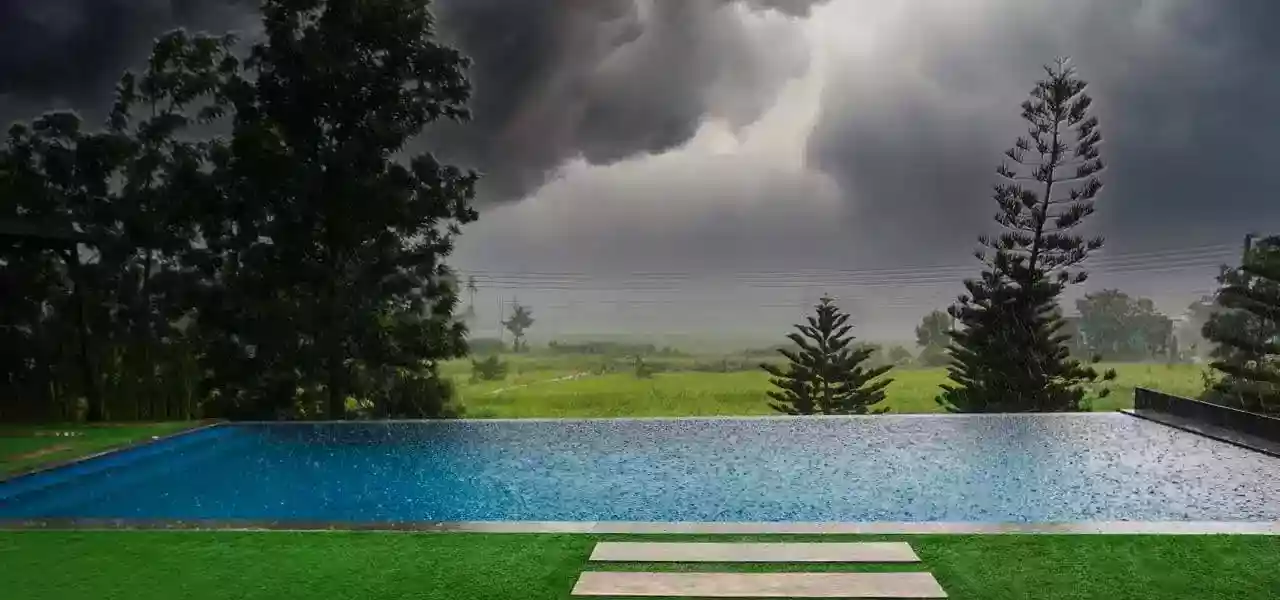FREE Standard Shipping On All Orders $100 or More!*

Stormwater Management and Inground Pools
Stormwater management and the water drainage path on your property are important elements to understand when building an inground pool. Figuring out where the excess water and possible debris will go should be part of the early planning stages. Your pool and the surrounding deck will create a large area of impermeability over the ground. Which will drastically change the way the water flows in your yard.
Pool Stormwater Management Permits
Depending on the location and zoning of your property, and the size and location of your pool, a stormwater management permit may be required before you can build your pool. There are additional factors that would require a stormwater management permit:
- Total square footage of pool and pool deck.
- Pool location. If your pool will be located near a floodway, floodplain, wetland, near a body of water, or uphill from neighbors or other buildings, a permit is required.
Planning for stormwater drainage is a very important step in initial pool planning. Planning ahead will help prevent excess water and debris from flowing into your pool and flooding it. It will also protect your backyard and the surrounding area from an overflowing pool.
Pool Grading Plans
A grading plan is essentially a blueprint that depicts the finished elevation of the pool and surrounding land. It illustrates topographical features, allowing county officials to visualize the run off around the pool and yard.
New pool construction that will disturb or displace a large amount of surface area in residential neighborhoods requires a grading plan. Additionally, if the construction blocks waterways, is near a resource-protected area, or is on a hillside, it will need a grading plan.
Obtaining Grading Maps
A local civic engineering firm, landscape architect or engineering company can make a drainage and grading plan. They will also produce professional plans that can be used by the excavator or grader surveying your pool's location.
Pitfalls to Avoid During Construction
Avoid pool contamination, backyard flooding, and building damage with the right knowledge of stormwater management. Before building an inground pool, take note of the common issues associated with stormwater management and how to avoid them.
High Water Tables
The term water table refers to the boundary between water saturated ground and unsaturated ground. A high water table means there is constantly saturated ground beneath the surface, even if the surface is dry. This becomes a problem when it storms or floods, because the saturation level will continue to rise, causing the ground to swell and shift.
This is why grading is so important. Even if you live in a dry state or have never had issues with a high water table, you never know what lurks underneath the ground surface. If your grading plan indicates a high water table in your yard, find a new location to put your pool, or hire a professional to repair the high water table.
Incorrect Pool Installation
A poorly installed pool will cause endless problems over time. Take time to thoroughly inspect the area where your pool will be located. Be sure to locate your pool away from the area where stormwater drains from your home and backyard.
Backyard Landscaping
Proper stormwater management doesn't just apply to grading and pool location. It also impacts your backyard landscaping. If you have a grassy backyard, chances are the water table below the surface is very high. Furthermore, if you have a garden or large potted plants, place them away from your pool. Stormwater runoff can cause gardens and pots to overflow. If your pool is in the way of drainage, soil and organic contaminants will flow right into your pool.
Swales and berms, French drains, retaining walls, or gravel channels are all creative, and oftentimes elegant, ways to improve backyard water drainage. Verify that the positioning of these drainage elements direct the water away from your pool and home.
Stormwater management is an important factor to prepare for when building an inground pool. Thoroughly planning for and inspecting the layout of your property's drainage system can prevent a disaster down the road. For more information, check out our post on Correcting Drainage Problems Around Pools.